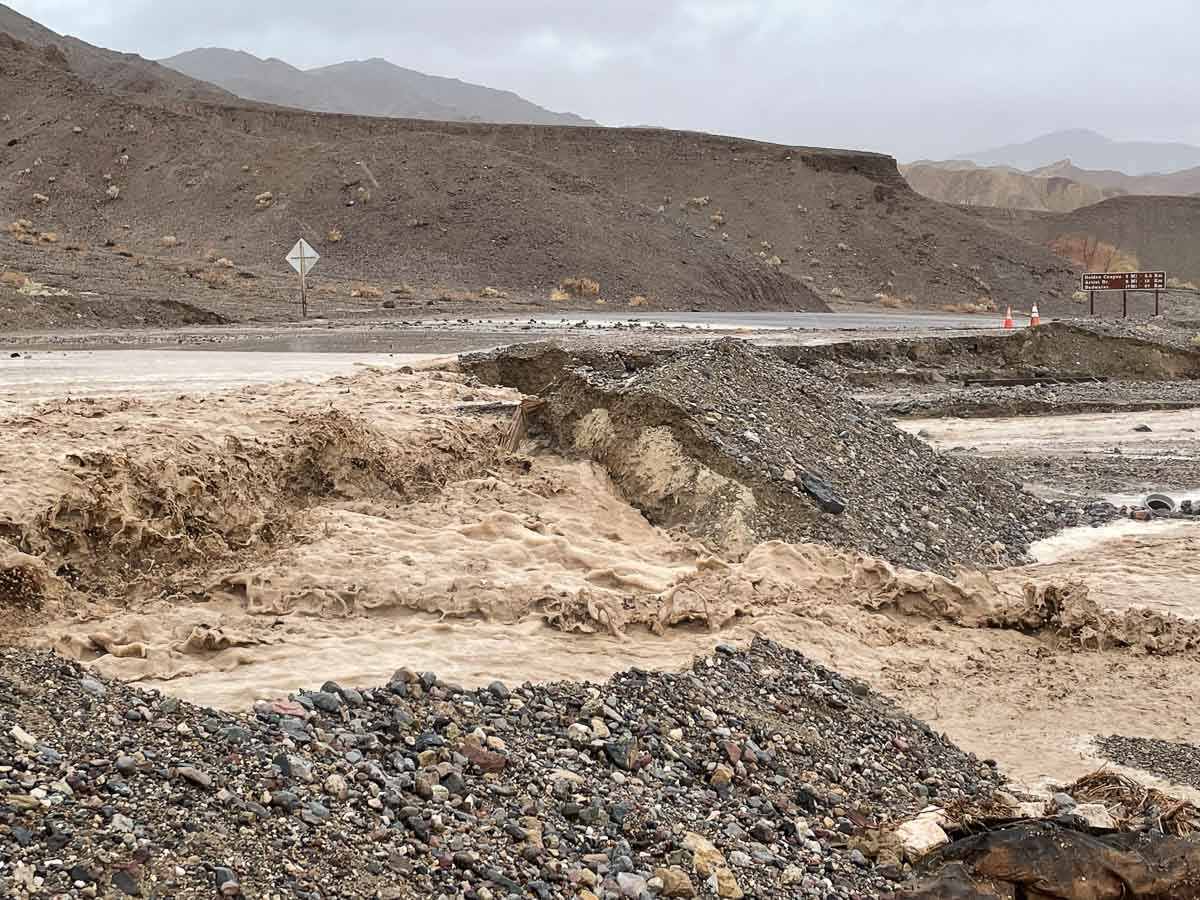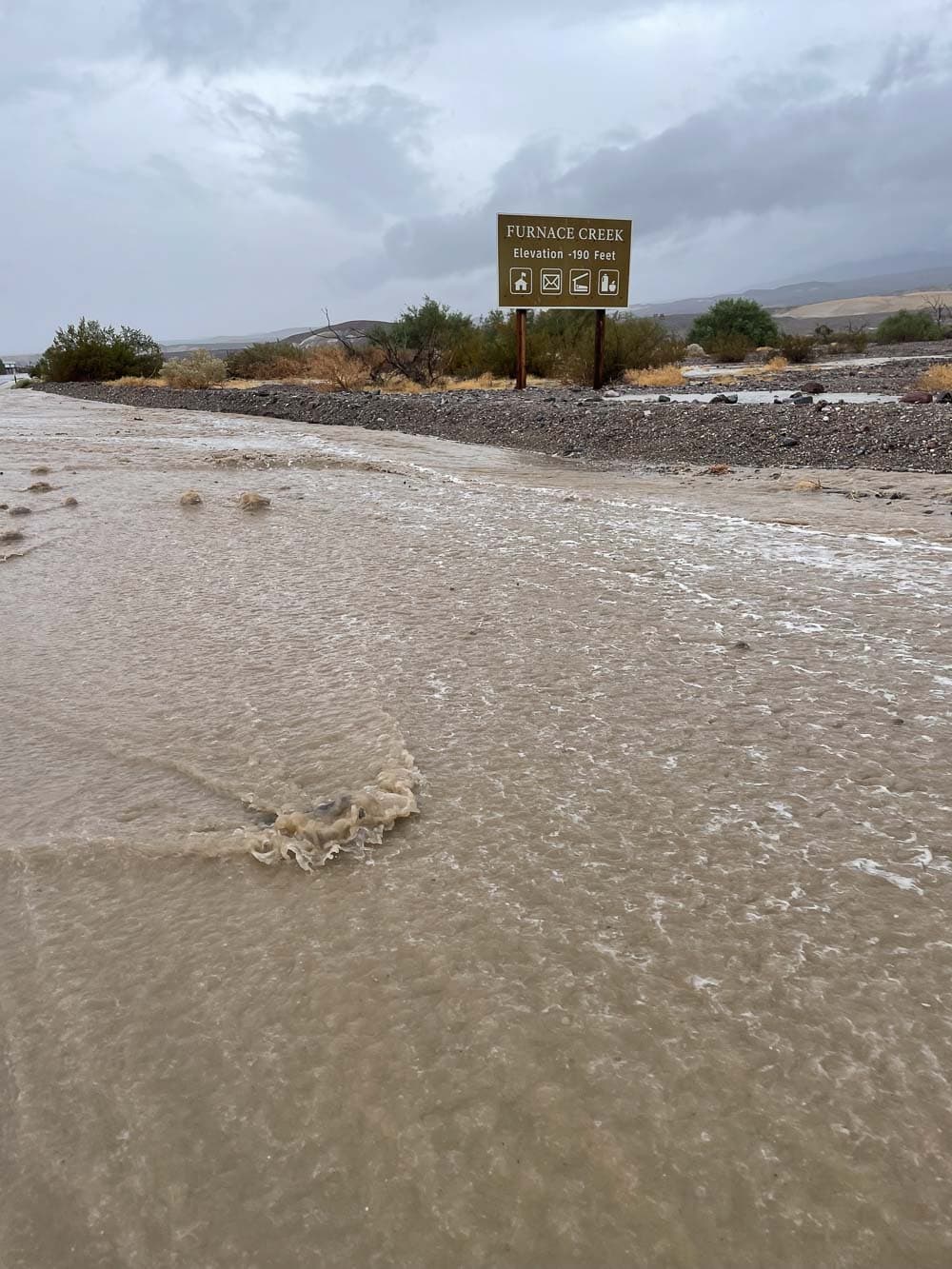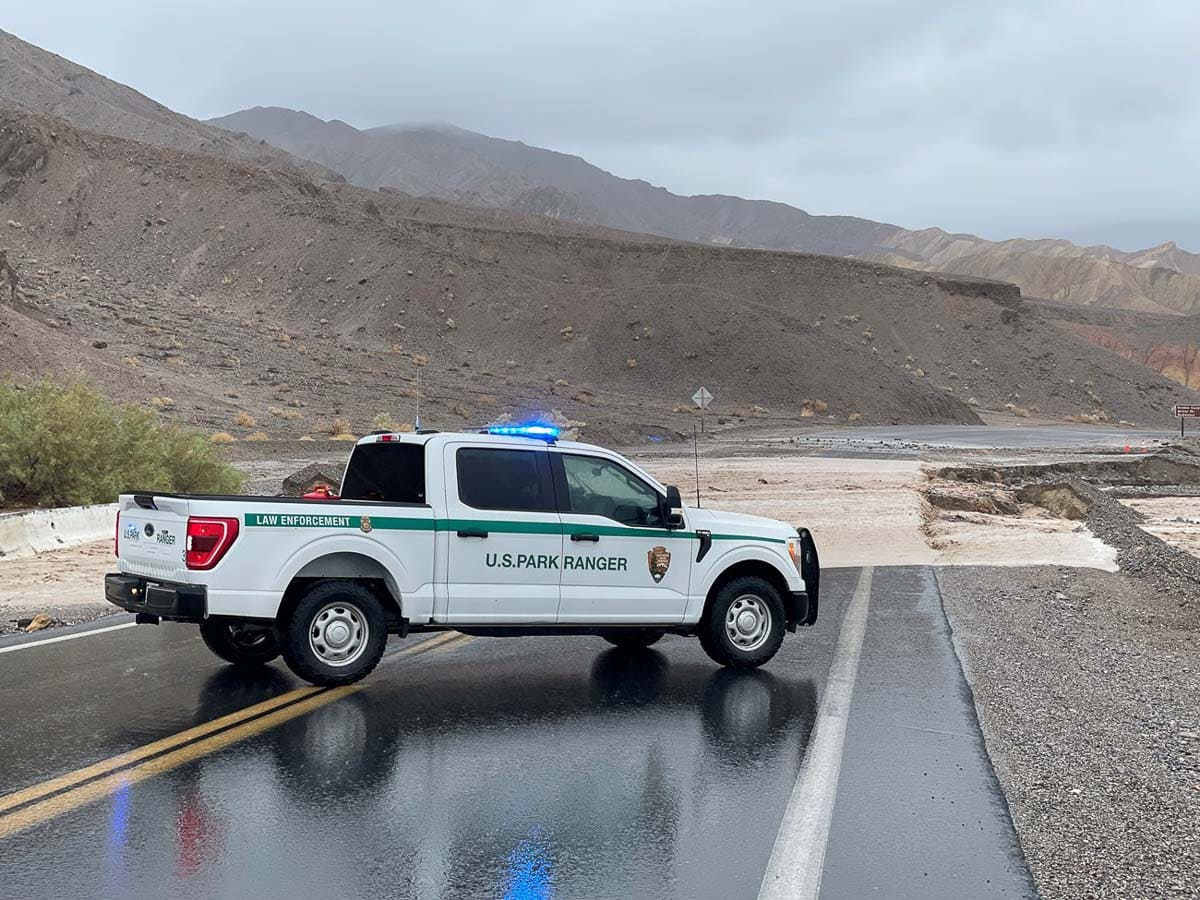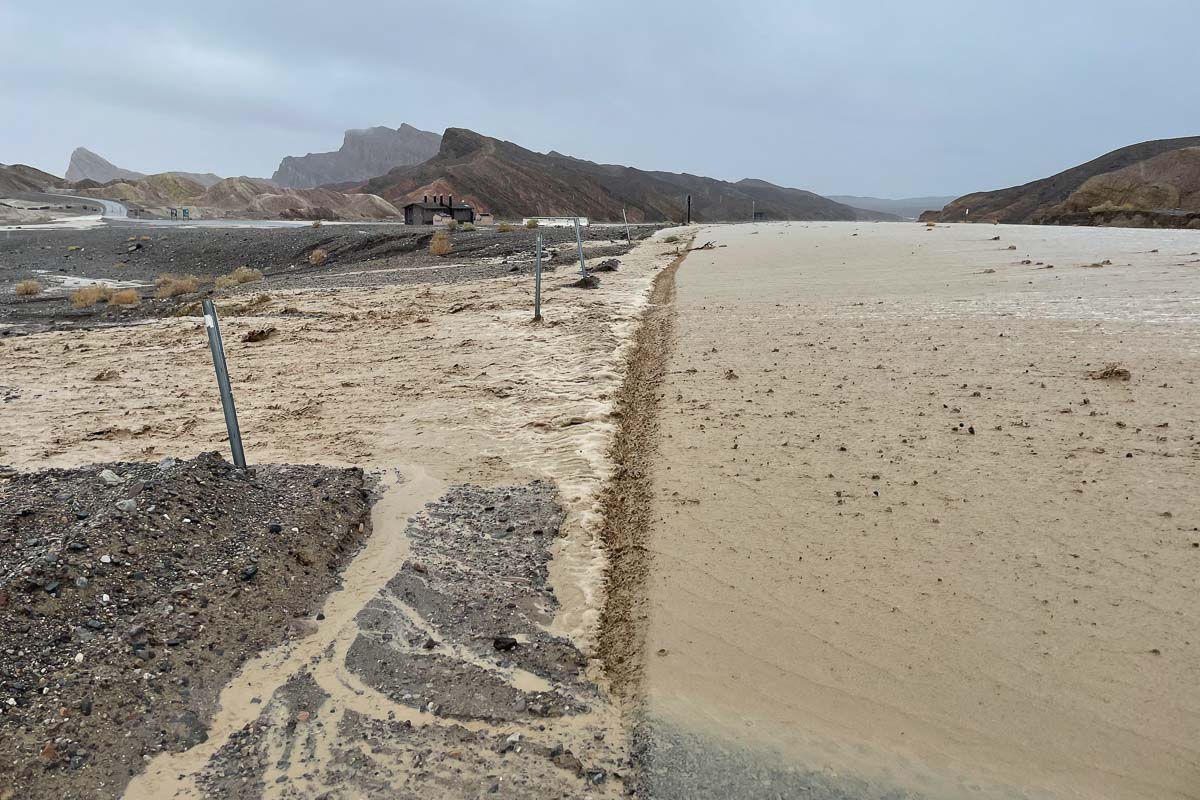Tropical Storm Hilary Closes Death Valley, Other National Parks (With PHOTOS)
This news story about flooding in Death Valley National Park due to Tropical Storm Hilary is based on an August 20, 2023, National Park Service press release. You can read the original release here.
A statement from Death Valley National Park management on Sunday said that “Death Valley National Park is closed due to active flooding” caused by Tropical Storm Hilary.
By mid-day on Sunday, the park had already received 1 inch of rain, with unprecedented levels of rainfall predicted over Sunday night. California Highway 190 is also closed, the park said.
Earlier, several other National Park Service sites in southern California and the Southwest had already closed entirely to visitors. This includes Joshua Tree National Park, Mojave National Preserve, and Lake Mead National Recreation Area.
In response to the potentially life-threatening conditions due to Tropical Storm Hilary, the Weather Prediction Center (WPC) of the National Weather Service “has issued a High Risk of excessive rainfall over parts of Southern/Central California into Monday morning.”
Severe, widespread flash flooding is expected. Areas that normally do not experience flash flooding will flood. Lives and property are in great danger through Monday, the WPC said.

Active Flooding Due to Tropical Storm Hilary Closes Death Valley National Park
Death Valley Park rangers are reminding travelers to “Turn around, don’t drown.” Flash floods are rivers of mud and rocks that can easily sweep cars off roads. Emergency responders may not be able to reach people in need.
Flash floods started in Death Valley National Park on Sunday morning, park management said. Furnace Creek Visitor Center received 1.04 inches of rain by 1:30 pm.

The park might receive one to three more inches of rain Sunday night. For comparison, Furnace Creek’s average annual rainfall is 2.2 inches. This unprecedented rainfall is due to Tropical Storm Hilary, which made landfall in Baja California as a hurricane.
In effect, this would mean that Death Valley might receive more than a full year’s worth of rainfall in just one day.
As this is still a developing weather event, it’s entirely unclear when Death Valley National Park might reopen again. “The reopening date is pending further assessment,” the park’s website says.
For reference, last year on August 5, Furnace Creek experienced 1.7 inches of rain in three hours. This event caused extensive impacts around the park including leaving travelers, employees, and residents stranded for 12 hours. The park was closed to the public for two weeks and it took 5 months for some paved roads to reopen.
You can find more information about current conditions in Death Valley National Park here.


Tropical Storm Hilary Closes Other Parks in the Southwest and California
Joshua Tree National Park
Elsewhere in the region, Joshua Tree National Park also braced for potentially severe flooding. The park will remain closed until at least 5 pm on August 21.
You can find more information about current conditions in Joshua Tree National Park here.
Lake Mead National Recreation Area
Additionally, Lake Mead National Recreation Area is closed until further notice. National Park Service officials warn people to be extremely cautious if traveling anywhere in the area this weekend.
“The park has already experienced multiple power and utility outages prior to the arrival of Hurricane Hilary,” Lake Mead management said. “Due to a storm last night [August 18], one marina experienced extensive damage, to include multiple dock separations, power outages, and fuel outages.”
You can find more information about current conditions in Lake Mead National Recreation Area here.
Mojave National Preserve
In Mojave National Preserve in southeastern California, Tropical Storm Hilary “is expected to cause substantial debris flows and washing out of road shoulders in the preserve, making roadways dangerous and impassable. Of particular concern is erosion and sediment mobilization exacerbated by the recent York Fire.”
“Travel in the preserve and the surrounding region is definitely not advised during these tropical storm landfall events,” said Acting Mojave National Preserve Superintendent Debra Hughson. “Debris-laden water can rise rapidly on area roads and can quickly become lethal.”
You can find more information about current conditions in Mojave National Preserve here.






